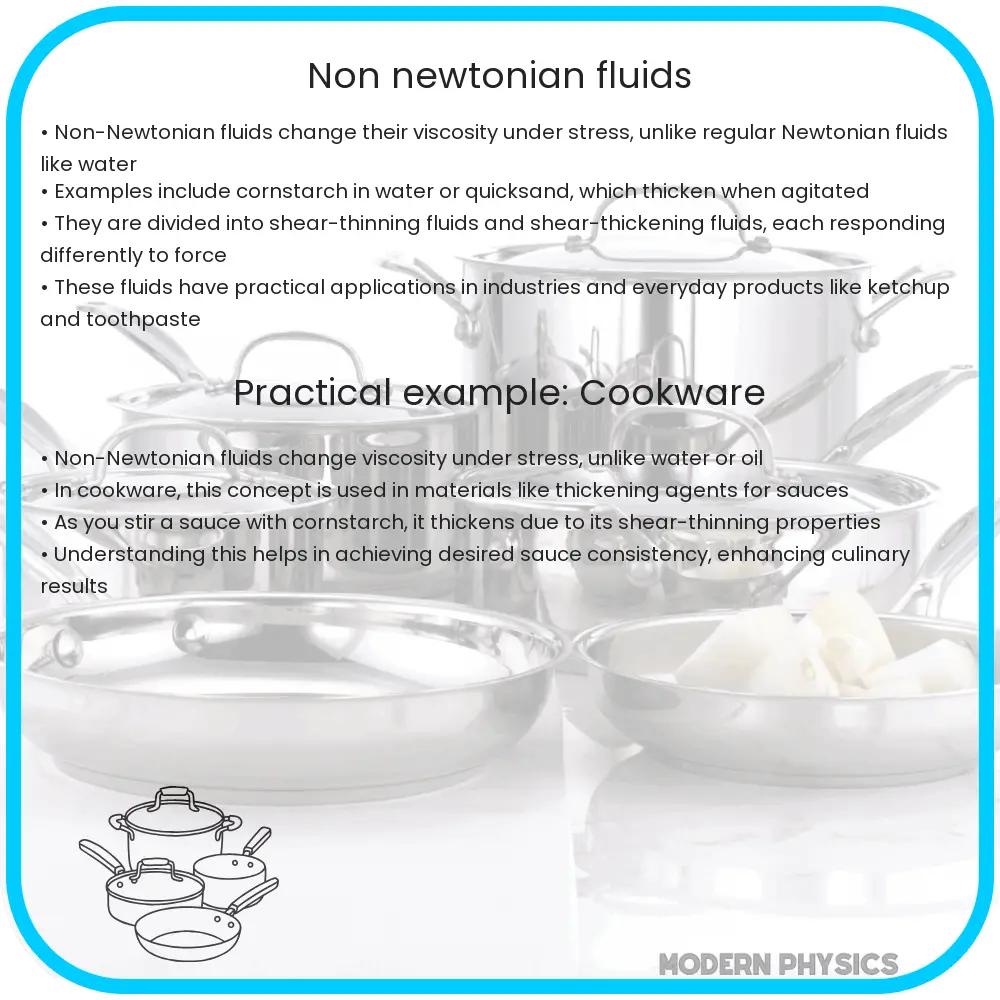Explore the intriguing world of Non-Newtonian fluids, their unique properties, behavior under stress, and diverse applications in various industries.

Understanding Non-Newtonian Fluids
Non-Newtonian fluids are fascinating substances that defy the conventional behavior observed in Newtonian fluids, like water or alcohol, whose viscosity remains constant regardless of the forces applied to them. In contrast, Non-Newtonian fluids change their viscosity or flow behavior under stress, making them unique and valuable in various industrial and everyday applications.
Properties of Non-Newtonian Fluids
One of the hallmark properties of Non-Newtonian fluids is their variable viscosity. Depending on the type of Non-Newtonian fluid, their viscosity can increase (shear thickening) or decrease (shear thinning) when under stress. Shear thickening fluids, for example, become more viscous when agitated or hit rapidly. Conversely, shear thinning fluids, such as ketchup, become less viscous when shaken or squeezed.
Another interesting property is thixotropy, a time-dependent decrease in viscosity; the longer the shear force is applied, the thinner the fluid becomes. This is reversible – once the stress is removed, the fluid gradually returns to its original viscosity.
Behavior Under Stress
The behavior of Non-Newtonian fluids under stress is intriguing. For instance, when you apply a sudden force to a mixture of cornstarch and water (a common example of a shear thickening fluid), it acts like a solid. However, if you slowly dip your hand into it, it feels like a liquid. This behavior is due to the arrangement and motion of particles within the fluid, which align or jam under stress, altering the fluid’s viscosity.
Applications and Uses
Non-Newtonian fluids have a wide range of applications. They are used in the food industry, where their unique properties help in the processing and packaging of products like gravy, soups, and sauces. In the medical field, non-Newtonian gels are used in drug delivery systems and in the manufacture of prosthetics. Additionally, shear thickening fluids are employed in body armor and other protective gear, providing flexibility and comfort, yet instantly becoming rigid upon impact.
The versatility and unique behavior of Non-Newtonian fluids under different conditions make them integral in various scientific and practical applications. Their study not only advances our understanding of fluid dynamics but also leads to innovative solutions to complex problems in engineering, manufacturing, and beyond.
Challenges and Future Directions
Despite their widespread use and benefits, Non-Newtonian fluids present challenges, particularly in predictability and control of their behavior under varying conditions. Their complex nature requires advanced modeling techniques and simulations for better understanding and application. Furthermore, environmental concerns and sustainability are pushing research towards eco-friendly and biodegradable Non-Newtonian materials.
Advancements in nanotechnology and materials science are opening new avenues for enhancing the properties of Non-Newtonian fluids. By manipulating the molecular structure, scientists aim to create fluids with tailored behaviors suitable for specific applications, from advanced manufacturing processes to innovative medical therapies.
Conclusion
Non-Newtonian fluids are a remarkable category of materials that challenge traditional definitions of liquid and solid states. Their unique properties and behaviors under stress offer a wide range of practical applications, from consumer products to high-tech industrial applications. The ongoing research and development in this field promise to yield even more innovative and practical uses, contributing to advancements in various sectors. As we continue to explore and understand the complexities of Non-Newtonian fluids, we can expect them to play an increasingly important role in solving future challenges and enhancing our everyday lives.
